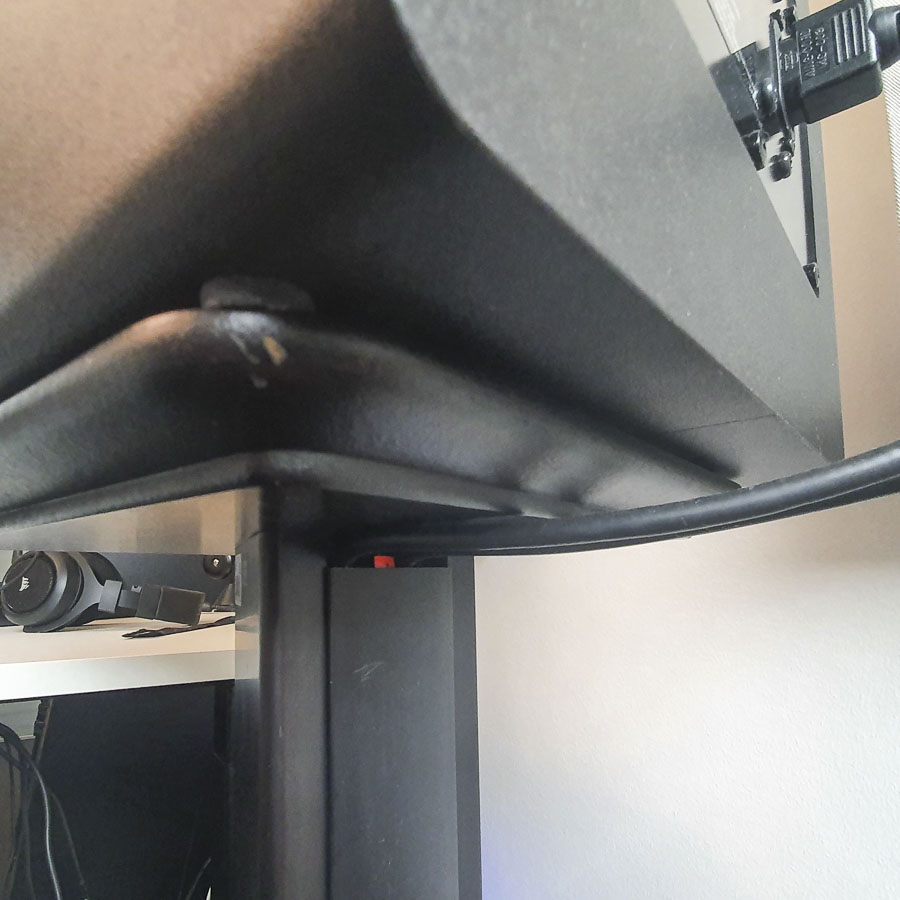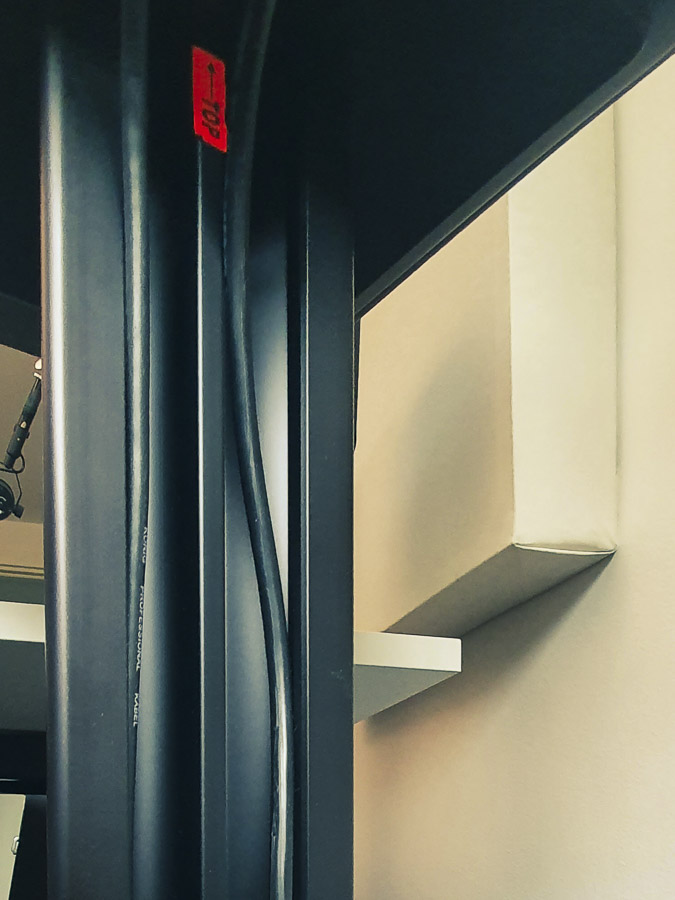Yes! Studio monitor stands are crucial for mixing audio for film or video as they position the speakers at the optimal listening height and angle, ensuring accurate sound reproduction. This positioning helps achieve a flat frequency response, minimizing bass vibrations, room reflections, and interference, leading to a more precise and immersive audio mix.
Key Takeaways
- Elevating monitors on stands enhances sound clarity by reducing interference and reflections from surfaces.
- Adjustable height and tilt angles allow for precise sound positioning at the ear level.
- Materials and construction of stands minimize vibrations, improving audio quality.
- Proper stand selection based on monitor size and weight ensures stability and optimal sound performance.
There is an endless list of equipment and accessories for your home studio. However, one item you may hold off on buying is a set of studio monitor stands.
Audio monitor stands may seem unnecessary when you are strapped for cash. You might think they’re only for music production. But let me tell you: they’re not!
Your audio must sound good for the production to be professional. In fact, one of the most common reasons short films aren’t selected for film festivals is that the audio isn’t up to par!
Table of Contents
What Is a Studio Monitor Stand?

Studio monitor stands (also known as audio monitor stands or speaker stands) are stands designed specifically to support studio monitors. They typically include a base platform, a central column, and an upper plate.
The column may be height-adjustable and include hollow channels for running cable. The upper plate is also sometimes adjustable to accommodate different speaker sizes.
Some of the more expensive options are tiltable, allowing you to adjust the angle of the studio monitors. They might also include a core, which you can fill with dried sand to reduce vibrations further.
Advantages of Using Audio Monitor Stands
A studio monitor stand is useful when you need to improve the acoustics in your home studio. The stand makes positioning the monitors at a specific height or angle easier.
Here is a closer look at why monitor stands are essential:
- Reduce sound interference
- Limit vibrations
- Manage your cables
- Save floor space or desk space
The main advantage of a studio monitor stand is the reduction of sound interference. When you place a studio monitor on a desk or floor, some of the sound energy from the speakers is absorbed by the desk or floor while the remaining sound energy is reflected.

Sound reflections can carry around the room, creating a less-than-ideal listening environment. You may notice a lack of clarity, especially when listening to high sound pressure levels. The speaker’s vibrations can also rumble the surface on which it rests. The desk or floor may vibrate during a bass-heavy track or an ominous drone.
Placing the studio monitor on a rubber mat may eliminate some of the vibrations and sound reflections. However, a monitor stand provides a more effective solution, providing a dedicated platform for the monitor.
Studio monitor stands also allow you to set the monitors at the perfect height and angle. The monitors should be directed toward your ears (with the tweeter at ear level), typically requiring them to be several feet off the ground.

Cable management is another advantage of using studio monitor stands. The center column often has one or more channels for running cable. Instead of hanging off the back of the stand, the cables are hidden inside the stand.
In addition to helping to maintain a cleaner studio, the cable channels isolate the cables from other equipment that may cause electrical interference.
Another reason to use a monitor stand is to save floor or desk space. Depending on the size of your studio, desk, and gear, you may not have space on the desk for studio monitors. Monitor stands free up space, as only the base sits on the floor or desk.
How to Choose the Right Studio Monitor Stand

Most studio monitor stands have comparable designs. However, there are a few different types to choose from. The most affordable stands often include tripod bases and thin, adjustable poles with no hollow channels. The most expensive options have wide bases, thick central columns, and stylish designs.
When comparing options, look at the following features:
- Size and height
- Design of the base
- Rubber padding
- Cable channels
- Heavy core
- Floor stands vs. desktop stands
- Stabilizers
The overall appearance may also influence your buying decision. Monitor stands come in various styles, including wood podium-style stands.
Size and Height
The first consideration is the size of the upper plate. The studio monitor sits on this plate. If it is too narrow, the speaker may not securely rest on the stand.
If you anticipate upgrading your studio monitors, you may also want to find a stand with an adjustable upper plate. Some upper plates can extend to accommodate wider speakers, allowing you to continue using the same stand.
Along with the size of the upper plate, you should check the height of the stand. In professional studios, the studio monitors are often positioned at least 46 inches off the ground. The height is often adjustable, but some cheaper options may only reach up to 36 inches.
The weight capacity is less of a concern and not always included in the product description, as it typically surpasses the weight of the heaviest studio monitors. If the monitor can fit on the upper plate, it is unlikely to exceed the weight capacity, but make sure to check it anyway—if available!
Design of the Base

The base of the stand is one of the features that varies the most between different models. Some stands have tripod-style bases, rectangular bases with feet, or a set of legs. All types of bases are stable enough to support a studio monitor, but some designs help minimize vibrations.
The flat rectangular or triangular bases with feet provide the most stability. They are also easier to move across the floor than tripod bases, as the tripod legs tend to fold as you move the stand.
The flat bases also typically have rubber feet. These feet help isolate the stand from the floor, further reducing vibration transmission. Along with rubber feet, some stands have spiked feet. The spikes act as decouplers by limiting contact with the floor.
Spiked feet and rubber feet are both suitable options for use on carpeting. Tripods are less likely to maintain balance when placed on a carpet, especially if the carpet has a deep pile.
Rubber Padding
Some stands include rubber padding or an upper plate with a lip around the edges to prevent the studio monitor from falling over. As with rubber feet, rubber padding also absorbs vibrations.
Cable Channels

The column that supports the upper plate sometimes has hollow channels to run the cables from the studio monitors. Hiding the cables creates a tidier appearance and reduces the risk of electrical interference.
Heavy Core
Good studio monitor stands have a heavy core to minimize the bass sound waves traveling into the floor and for extra stability.
To minimize the cost of transport, the stands might come with a hollow core that you need to fill up with dried sand. This is an easy and inexpensive solution, but the benefits are great.
Floor Stands vs. Desktop Stands
The main difference between desktop and floor stands is the height. Floor stands are intended for placement on the floor, while desktop stands sit on desks.
As desktop stands are shorter, it is easier for sound energy from the studio monitors to reach the desk. The best desktop stands have flexible supports that act as shock absorbers to minimize vibrations.
Floor stands do not require the same level of shock absorption as desks, as the floor can absorb more sound energy.
Stabilizers
Stabilizers can be used as an alternative or addition to studio monitor stands. Most stabilizers are rectangular pieces of sound-absorbing foam.
The foam absorbs sound energy, keeping it from passing to the floor or desk. Using foam stabilizers is not enough if you want your speakers to perform the best.
Conclusion
Studio monitor stands to improve sound clarity and isolation. They separate the studio monitors from the floor or desk, preventing sound vibrations from carrying through to other surfaces.
If you want to improve the acoustics in your home studio, monitor stands are essential items. That being said, if you’re sitting in a room with naked walls and have bought crappy speakers, the stands won’t help much.
So ensure you acoustically treat your room with sound absorbers and do not buy the cheapest speakers. I’ve had many types of speakers – also very expensive – but you don’t need that.
You can get good studio monitor speakers from reputable brands such as Adam, Yamaha, and Genelec that don’t cost a fortune but can still be trusted.
To choose the right stands, remember to check the size of the upper plate and the height of the stand. It should fit your studio monitor and provide enough height for optimal monitoring.
Up Next: What Is ADR in Film? A Hollywood Dubbing Expert Explains

